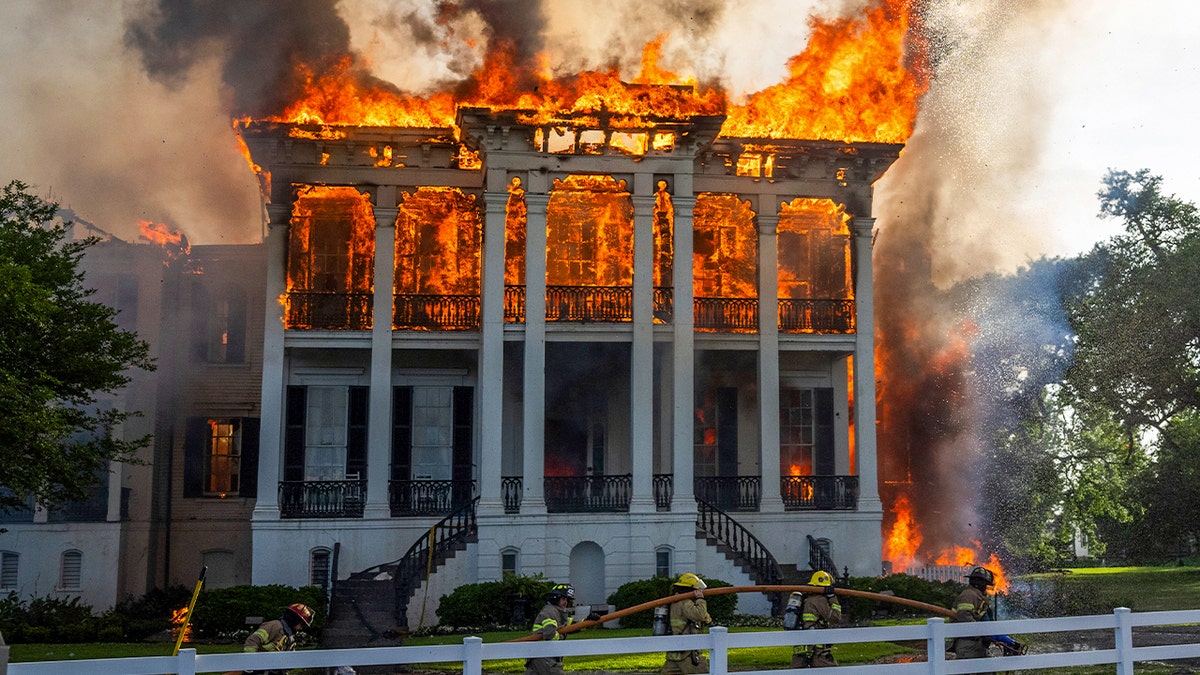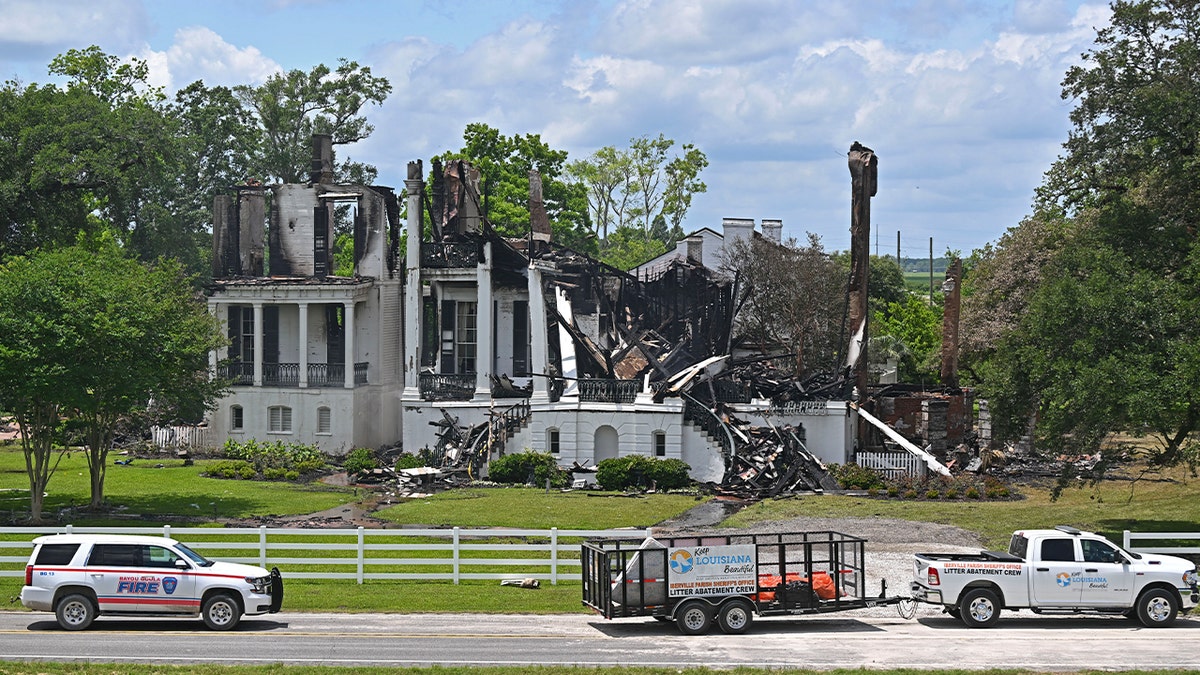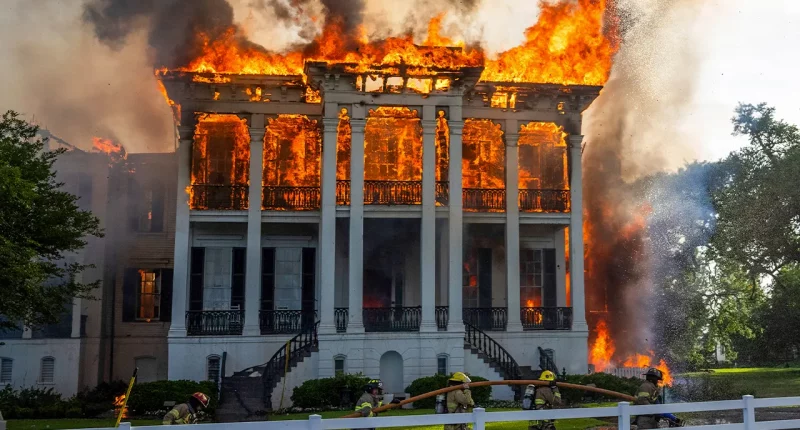Share this @internewscast.com
Historic Nottoway Plantation, recognized as the largest antebellum mansion in the United States, was completely destroyed this week due to a fire that broke out on Thursday. Fortunately, there have been no injuries or fatalities associated with the incident.
Firefighters were on the scene trying to put out the flames, and water was reportedly being sprayed on the remains up to 18 hours after the blaze began, as reported by Fox 8. By Saturday, the cause of the fire was still being investigated.
“Some staff shared that they had entered the museum and noticed smoke. When they came back, the entire room was aflame,” Iberville Parish President Chris Daigle told Fox 8, mentioning that the site was “a total loss.”

Fire crews move in a line around the now fully engulfed the Nottoway Plantation on Thursday, May 15, 2025, in White Castle, La. (Michael Johnson/The Advocate via AP)
Randolph first arrived in Louisiana in 1841 and began by planting cotton, but ultimately shifted to sugar cane, according to the LSU Scholarly Repository. The scholarly repository article also notes that the mansion was named “Nottoway” after the county in Virginia where his ancestors lived.
U.S. Department of the Interior records cited by Axios show that Randolph owned 155 slaves and 6,200 acres of land by 1860.
In addition to the luxurious mansion, the property also featured several trees that are over 100 years old, several of which are more than 120 years old, according to Nottoway Plantation’s website.

Light smoke can be seen from a handful of active hot spots as crews remain on scene after a fire on Thursday engulfed the historic Nottoway Plantation, Friday, May 16, 2025, in White Castle, La. (Hilary Scheinuk/The Advocate via AP)
In modern times, the mansion and the surrounding property functioned as a museum, resort and wedding venue. Nottoway Plantation’s website states that it sat on 31 acres, which included 40 overnight rooms, a bar, a restaurant, event space, a pool, tennis courts and more.
“While its early history is undeniably tied to a time of great injustice, over the last several decades it evolved into a place of reflection, education, and dialogue,” Daigle wrote in the Facebook post. “Since the 1980s, it has welcomed visitors from around the world who came to appreciate its architecture and confront the legacies of its era. It stood as both a cautionary monument and a testament to the importance of preserving history — even the painful parts — so that future generations can learn and grow from it.”
















